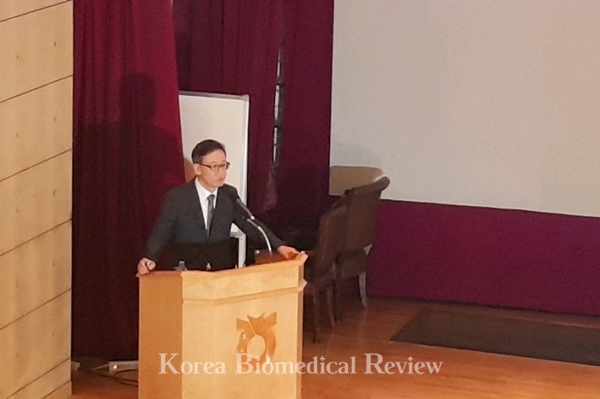Helixmith used to be one of the promising biotech firms with its market capitalization ranking second on KOSDAQ.
However, the company failed to complete the global phase-3 trial on a gene therapy due to its drug mix-up between the placebo and the treatment, and it is blaming others for its own mistake.
Helixmith on Tuesday said it detected data contamination for its gene therapy Engensis, also known as VM202-DPN, in treating diabetic peripheral neuropathy (DPN) in the phase-3 trial, possibly because of a mix between the placebo and treatment groups.
The company’s pharmacokinetic (PK) data analysis found high levels of VM202 in 36 patients in the placebo group, and low levels of VM202 in 32 patients in the drug-treated group. Ninety percent of the placebo-given patients had high levels of VM202 after the first and second week of administration.

Thus, the trial failed to meet the primary endpoint in the intent-to-treat (ITT) group where the company analyzes data of all subjects. There was no significant difference in pain reduction effect in the treatment group, compared to the placebo group.
“We have heard that there are occasional drug mixes in clinical trials, but we didn't know this would happen to us. We think a poorly managed hospital might have mixed up drugs,” Helixmith CEO Kim Sun-young said at a briefing in Yeouido, Seoul, on Tuesday. “We will have our investigation and pursue litigation against the responsible institution.”
As the trial was double-blind, the company was not able to know whether a patient was in the placebo group or the treatment group, he went on to say, explaining why the company belatedly found the mistake.
However, industry officials said it was impossible that the company never knew about the mishap until the trial was coming to an end.
“In a trial, you’re supposed to closely monitor which medications are prescribed to which patients because all drugs, including placebos, are numbered and labeled,” an official at the clinical trial team of a multinational drugmaker said. “Even if a prescription error occurs, the hospital, the pharmacy, and the clinical research associate can correct it through regular monitoring. It is not common sense that the company did not know the drugs were mixed until the last minute.”
Another industry source said, “Most studies are double-blind. The company’s claim that it could not detect the drug mix-up because it was double-blind is just an excuse.”
A rumor about the mix of the drugs circulated in July. The story was about the company’s error in labeling drugs in the phase-3 study, which would make it impossible to use the data.
In response to the rumor at the time, Helixmith said, “If this had happened, it would be a serious mistake. This is a complete lie.”
However, the rumor turned out to be true.
In spite of the company's lack of careful clinical management, Helixmith is blaming its contract research organization (CRO) and the hospital.
“Even if a company delegates the right to a clinical study to a CRO, the ultimate responsibility rests with the sponsoring company,” an official at a pharmaceutical firm said. “Helixmith is showing a very irresponsible attitude as if the company did nothing wrong.”

